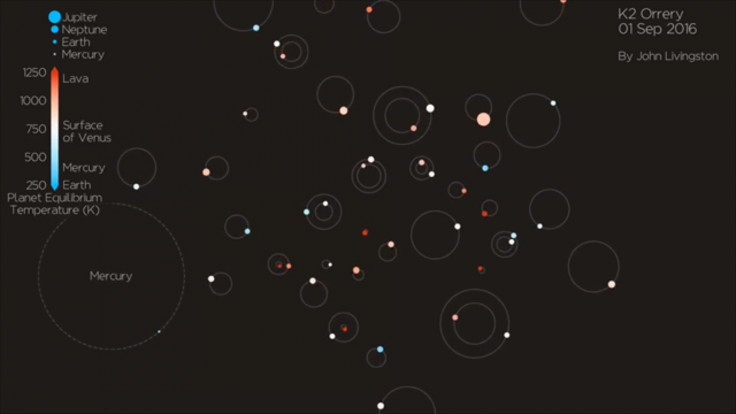Airborne dust could be key factor in presence of alien life on planets: Study
A new study urges scientists to look for atmospheric makeup of planets in search of alien life.
Researchers may have found a clue to finding alien life on other planets. According to a study, scientists have found out that the presence of airborne dust in the atmosphere of planets could potentially be a sign of life.
For decades, scientists have been in quest of identifying habitable planets and alien life in our solar system. However, they have not reached any certain answer. Meanwhile, a team of researchers from the University of Exeter, the Met Office and the University of East Anglia (UEA) found out that airborne dust on the planets that are orbiting around a parent star like ours could be the deciding factor about the habitability of the planet and sustainability of life on it.
The study that was published in a journal named Nature Communications suggests that the planet's climate must be "stable enough" for a long period of time for the complex living organisms to grow and evolve. This may require the "presence of significant land cover."
The study explains why mineral dust is a "significant component of the climate system." Unfortunately, the effects of which have been neglected in climate simulation and studies of exoplanets. As per the study, dust "class of atmospheric aerosol lifted from the planetary surface" that can cool the surface, protect it from radiations, and also warm the climate by absorbing and emitting infra-red radiation. On Earth, dust is important for shaping "regional climate" and global climate.
Therefore, the researchers urge scientists in looking for dust on planets in their search for alien life. It is understood that many times planets orbit around smaller and cooler stars than our Sun. These planets are categorised as M-dwarfs and might be facing extreme climatic conditions on each side. However, the study reveals that large amounts of dust could balance out the extreme conditions, by warming the colder side and cooling the hotter side. This means dust could potentially be the key ingredient of making a planet inhabitable.
"On Earth and Mars, dust storms have both cooling and warming effects on the surface, with the cooling effect typically winning out. But these 'synchronised orbit' planets are very different," said Ian Boutle, lead author of the study and jointly from the Met Office and the University of Exeter in a news statement as published on Phys.org. "Here, the dark sides of these planets are in perpetual night, and the warming effect wins out, whereas, on the dayside, the cooling effect wins out. The effect is to moderate the temperature extremes, thus making the planet more habitable."
The scientists' study also provides proof that airborne dust could play a significant role at the inner edge of the habitable zone of planets that could get extremely hot for water to evaporate. Meanwhile, another lead author insists that the study unravels the possibility of exoplanets supporting life may not only depend on their ability to emit light energy but their atmospheric composition.

"Airborne dust is something that might keep planets habitable, but also obscures our ability to find signs of life on these planets. These effects need to be considered in future research," Prof Manoj Joshi from UEA said.
© Copyright IBTimes 2024. All rights reserved.





